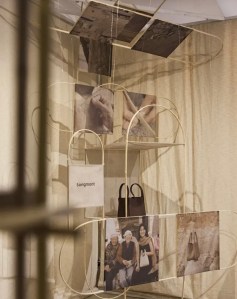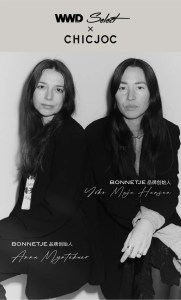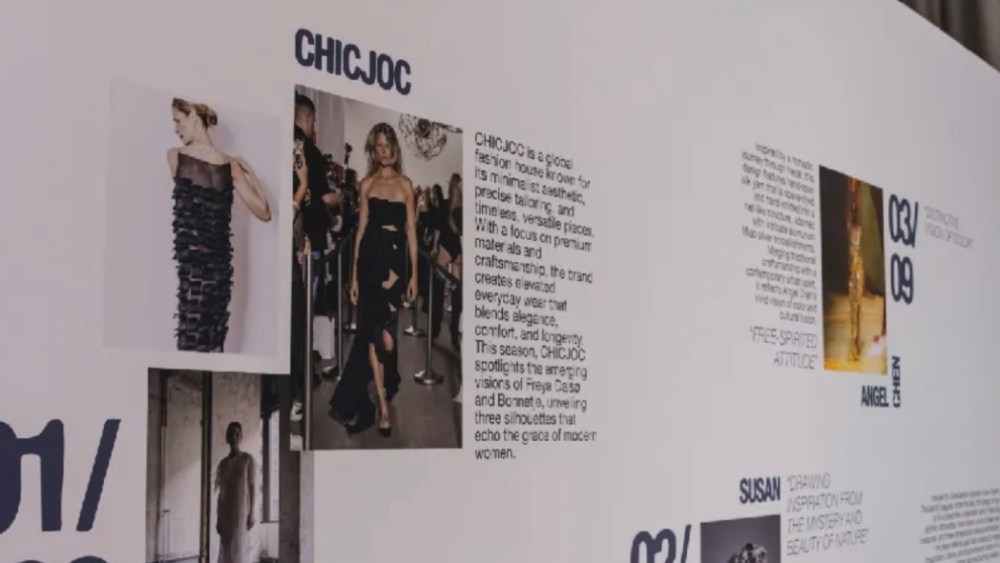After two intense months of back-to-back tests during China’s “Golden September and Silver October” retail peak, local fashion players are redefining how to balance globalization and localization, narrative and conversion.
The End of the Scale Myth
For much of the past decade, China’s apparel industry has been dominated by a “scale-first” mentality. Speed was the weapon; size, the defense. Brands raced to expand through new stores and soaring stock keeping units — using quantity as the main measure of success.
That strategy worked in an era of rapid economic growth. But as China’s market matures and competition shifts from expansion to retention, the marginal benefits of scale have sharply declined. Digitalization has also transformed the landscape: in an age of endless scrolling and information overload, attention has become the rarest currency.
To hold that attention — and convert it — brands have moved beyond pure product play, embracing aesthetics, culture, and ideology. Fashion weeks have emerged as the ultimate stage for that expression: a place where high-end image building meets global dialogue. Yet once the applause fades, brands must return to the commercial frontlines — livestream rooms, social commerce platforms, and Singles’ Day.
This season, many of China’s rising stars did exactly that — flying from Paris back to Shanghai overnight, shifting seamlessly from runway storytelling to retail strategy.
Oriental Narratives on the Global Stage
As Chinese brands evolve from chasing scale to shaping meaning, global fashion weeks have become essential to building emotional resonance. But unlike in the past, Chinese designers are no longer just seeking validation abroad — they’re creating cultural conversations that speak to global and local audiences.
Icicle returned to Paris with its spring 2026 Artisan Series, themed “Beyond the Window.” Through fluid fabrics, natural textures, and hues inspired by China’s traditional five-color philosophy, the collection explored the balance between transparency and freedom — a continuation of the brand’s humanist and ecological roots.
A look from Icicle’s spring 2026 collection.
SongMont, the first Chinese luggage label to exhibit at Paris Fashion Week for two consecutive years, translated the spirit of China’s Central Plains into a multisensory experience. Its “Song of Mont” exhibition incorporated heritage stone carvings, architectural silhouettes, and Silk Road-inspired design details — a dialogue between ancient craftsmanship and contemporary form.

Songmont was the first Chinese luggage label to exhibit during Paris Fashion Week in two consecutive years.
For Keigan, founded by a team that includes an architect, the goal was to redefine what a fashion brand can represent. Its Keigan Genius Salon revived the intimate cross-disciplinary gatherings of 18th-century Europe — bringing together designers, artists and cultural figures to explore the intersection of fashion, architecture and art. Following its Paris debut, Keigan opened its first flagship store in a historic building on Shanghai’s West Nanjing Road, symbolizing its commitment to aesthetic co-creation.
Meanwhile, Chicjoc, through the WWD China Select program, bridged global and Chinese creativity in Milan with “Heritage Next: Glowing Milano.” The exhibition, part of Milan Fashion Week’s official calendar, connected emerging international designers with Chinese retail expertise and consumer insights — transforming cultural exchange into commercial opportunity.
Together, these initiatives revealed a shared ambition: to merge cultural identity with international relevance, and to convert global visibility into sustainable growth back home.
Singles’ Day: From Cultural Symbols to Consumption Power
As the spotlights of global fashion weeks dimmed, a different kind of spotlight came on in China: Singles’ Day. For many brands, it was the next major test of their ability to turn storytelling into sales.
The 2025 Singles’ Day presale began Oct. 15, with down payments starting Oct. 21. Within hours, domestic players dominated key categories. On Tmall, two brands under Anta Group took the top two positions in sports and outdoor sales, surpassing long-time leader Nike. In beauty, Chinese brands such as Chando, Proya and Maogepingalso continued their upward trajectory, outpacing many international names.
For fashion brands returning from global stages, Singles’ Day was more than a shopping festival — it was a test of monetizing cultural momentum. Chicjoc, for example, built on last year’s success, where its live show with Taobao Apparel generated more than 64.2 million yuan (about $9 million) in a single day. This year, the brand partnered again with Taobao Apparel to host the 2.0 Super Fashion Launch, featuring emerging Danish designers Freya Dalsjø and Bonnetje, both part of the WWD China Select program.

Bonnetje founders Anna Myntekær (left) and Yoko Maja Hansen (right).
A New Playbook: From Aesthetics to Conversion
In an era where aesthetics are the ultimate differentiator, brands can no longer rely solely on price or speed. The new formula is a closed loop of aesthetics — engagement — conversion.
Cultural storytelling builds awareness; engagement sustains relevance, and strategic digital integration turns influence into sales. The synergy between fashion weeks and Singles’ Day — between high fashion and high traffic — is becoming the hallmark of China’s next-generation brand strategy.
As the boundaries between global prestige and domestic performance blur, 2026 will likely see deeper integration between international fashion calendars and China’s digital economy. True globalization, after all, means more than showing abroad — it means transforming global fascination with Oriental aesthetics into genuine consumer connection and tangible growth.
Editor’s Note: China Insight is a monthly column from WWD’s sister publication WWD China on trends and developments in that all-important market.
